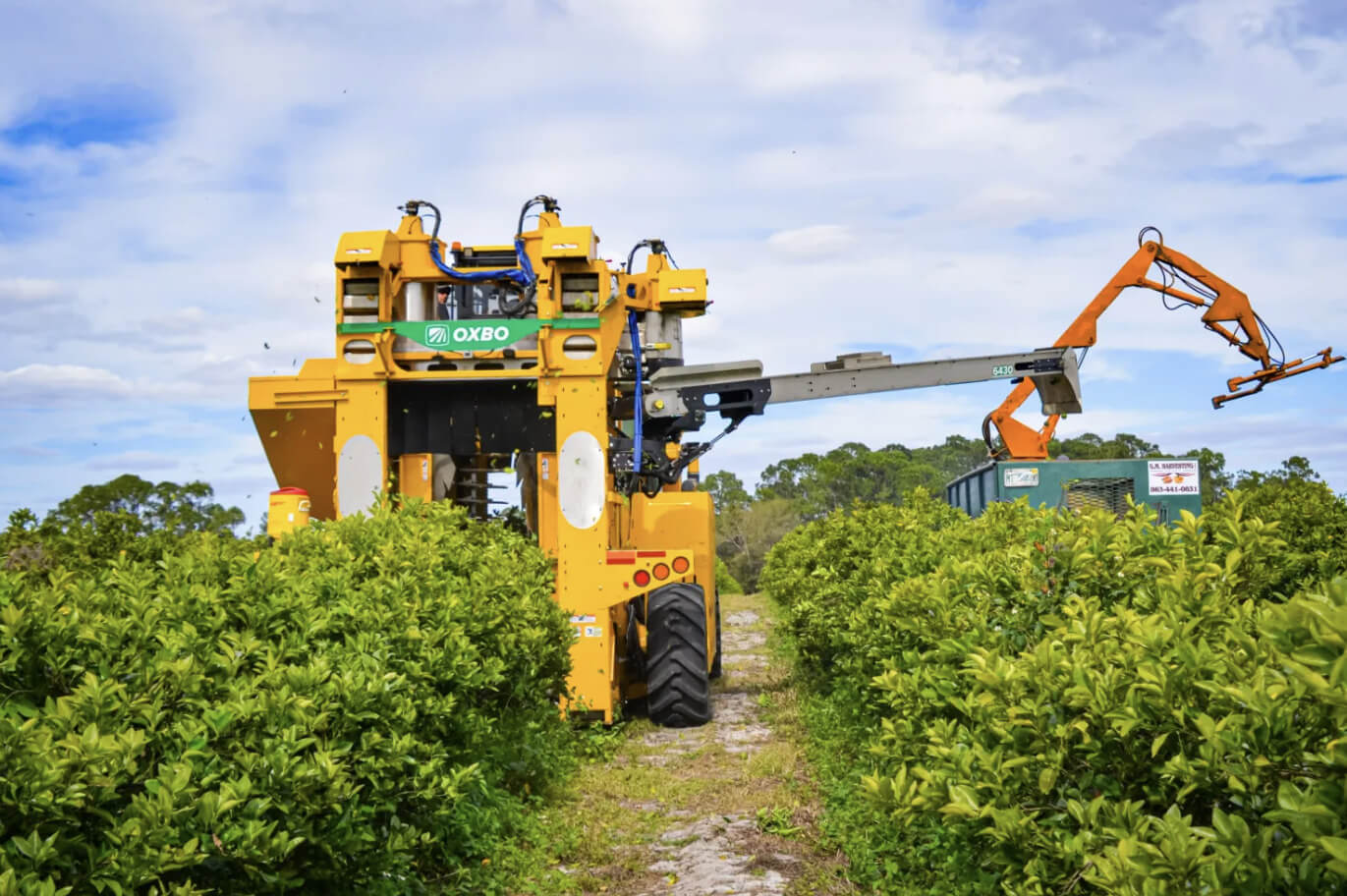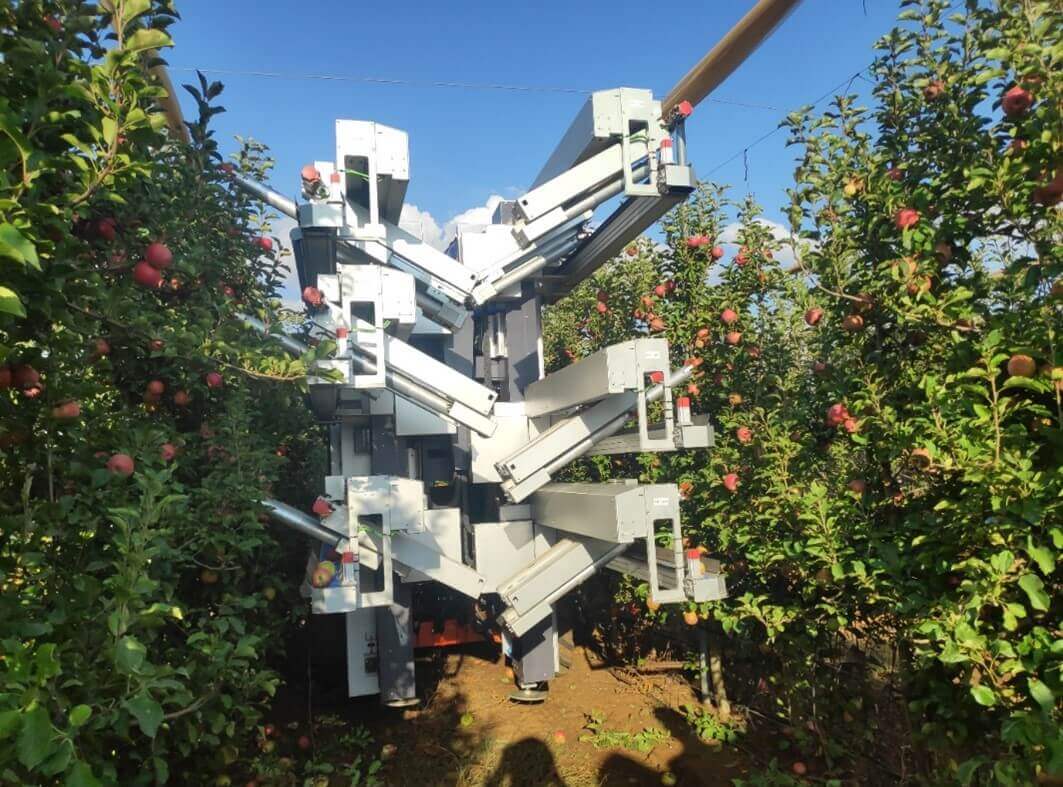Super High Density System
The Super High Density olive grove is a revolutionary new agronomic model driven by Agromillora for over 30 years in an effort to solve many of the problems are faced by growers in traditional crops. Our system translates into much more profitable and efficient crops for our customers.
Super high density systems are a reality in the agronomic landscape around the world and they hold the key to the future of an increasingly competitive sector, where cost reduction, lower dependence on labour, yield increase and the improved quality of agricultural products are core factors determining the economic profitability of modern farms.
Super High Density features

Reduced plantation patterns and high plantation density (>1,500 plants/ha).

Orientation: N-S orientation makes it possible to reduce the street width without shading.

Harvesting with over-the-row machine or by hand in the case of fresh fruit.

Fully mechanized pruning and thinning.
Advantages of the hedge model
- Higher productivity per unit of area.
- Fully mechanized harvesting. Total mechanization of cultivation tasks from the moment of planting with a significant reduction in costs.
- Early entry into production, with a faster amortization of the initial investment.
- Greater efficiency in pesticide application.
- Higher product quality, high harvest quality (proper ripening, minimum damage to the fruit.
To wich crops does it apply?
About Hedge Model
Artificial Intelligence with an Olive Oil Flavor
Artificial Intelligence with an Olive Oil Flavor Innovation and Adaptation in the Face of Uncertainty: The Future of the Olive Sector In a year when olive oil consumption in Spain has dropped by 20% and prices have surged by an average of 73% in just 12 months, according to a recent FACUA study, the olive […]
New olive varieties
The introduction of mechanical harvesting with a ride-on machine has represented, since the mid-1990s, the second “Olive Growing Revolution,” spreading high density also to olive growing, which until then was an exclusive model of viticulture and fruit growing. Super-intensive olive groves in fact, are similar to modern wine grape vineyards: high planting density (1200-2000 trees/ha), […]
Growing Citrus Under Protective Screen to fight HLB
Growing Citrus Under Protective Screen to fight HLB Florida, and its traditional citrus orchards, has been suffering the effects of a destructive bacterial disease for over a decade now. HLB (Huanglongbing), also known as ‘greening’, has devastated close to two-thirds of the citrus plantations that existed 20 years ago. In two decades, the area of […]
Field Day Features Mechanical Citrus Harvest
The recent field day showcased how technology might help citrus growers with two of their biggest challenges: sourcing labor and fighting HLB The event was held at Lost Lake Groves in Lake Placid, Florida, and featured machine harvest of citrus trees in an experimental super-high-density grove. The grove has 908 trees per acre and has […]
A dream come true: the fresh fruit picking robot
A dream come true: the fresh fruit picking robot Summary The FF Robot collector provides the farmer with a more effective and efficient alternative that saves labor costs, increasing the profitability of the farm. This system also offers the opportunity to greatly improve fruit production, orchard sustainability and food security with precisión agriculture capabilities by […]
We are leaders in the hedge model and are always at the forefront of innovation to respond to new trends in the international agricultural sector.
We work to provide growers, technicians, and
companies in the sector with solutions to the new challenges that continue to arise: the development of new varieties and rootstocks, new hedge training and management systems, increasing production levels, and in general, new opportunities for the industry.
Global Hedge Plantations
World evolution of hedge plantations

Total % of hectares of hedge fields

Source: Study on the total area of hedgerow plantations carried out by Agromillora Group.
Last update: March 2021
Development of Super High Density Plantations
The first super high density crops appeared in the 70s, led by the M9 apple tree dwarfing rootstock. Later, during the 80s, a dwarf pattern was also developed for pear trees. However, while by the late twentieth century the cultivation of these two species in high density was already fully developed and widespread among growers, the jump to super high density in other woody species crops had not yet occurred.
Agromillora—driven by our desire for innovation in new agronomic models and our contribution to the development of agriculture worldwide—carried out the first super high density olive plantation in the 90s.
The super high density olive grove is a cultivation technology that the company has fine-tuned with the collaboration of many of our clients.
It allows us to boost profitability remarkably with respect to traditional olive groves.
At the end of the 1990s, a cherry dwarfing pattern also appeared that allowed plantations of between 1,000 and 2,000 trees per hectare.
This marks the beginning of the cultivation of stone fruit trees in high density.
Due to the success of these plantations and their high yield, at Agromillora we how to introduce high-density plantations in the cultivation of other fruit species. As a result of this approach and the emergence of the Rootpac®20 and Rootpac®40 patterns, developed by our genetic improvement programme in the R&D department and designed for adapting several species to the high density system, various super high density almond, peach, nectarine, plum and apricot plantations were developed.








